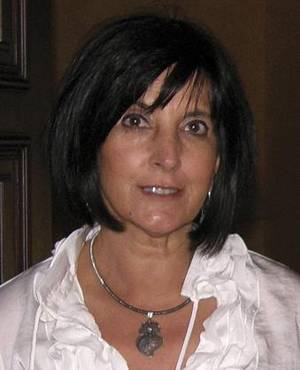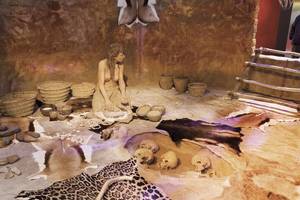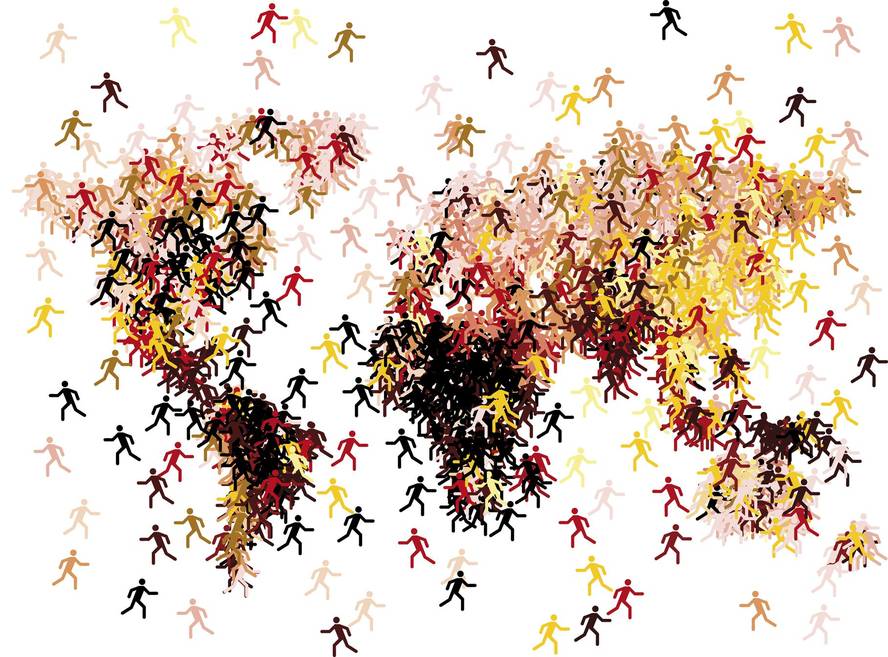Back in time, following the DNA
In the Middle East the first peasants appeared and with them began the Neolithic era. "However, the expansion was quite slow. And there is a pretty big debate among scientists. It is not clear that the culture and technology created were spread, or that they were transported by man from one side to the other," explains Marian Martínez de Pancorbo, director of the UPV DNA Bank.
This debate has its origin in the studies carried out in the Neolithic sites. In fact, scientists have discovered evidence in favor of one or another idea of the type of DNA they study in human footprints. To analyze population displacements, they observe two parts of total DNA: mitochondrial DNA on one side and chromosome Y on the other. Thus, they can distinguish the movements of women and men in individuals of a given population or deposit: the mitochondria receive them only from the mother and chromosome Y passes from parents to children.
Well, in the deposits of the Neolithic era of western Europe, analyzing the DNA of the mitochondria, it has been observed that the populations were from the era of the Paleolithic, no migrations. As for chromosome Y, the researchers have reached the opposite conclusion: they are more similar to chromosome Y of the eastern populations than to the European ones. This suggests, therefore, that they were directed towards the west, and that they carried with them the agricultural and livestock culture.
A group of researchers from the National Center for Scientific Research, the University of Strasbourg and the Higher School of Social Sciences Studies of the French city, studied a 500-year-old necropolis (Neolithic) discovered in the cave of Treilles de Tolosa. We were able to obtain DNA samples from 29 individuals. 22 were men. Therefore, in most individuals, both maternal and paternal lineages were studied. And they saw that they came from different origins: the lineage of his mother was European and that of his father of the East.
Thus, before the idea proposed by other researchers was resumed: peasant men moved in the East and, upon arriving in Europe, they met with local women.
Comparisons with current populations

To clarify the origin or not of a given ancient population, they compare the DNA of their mitochondria and chromosome Y with current populations. Thus, it is not possible to obtain a continuous regression record in time, that is, it is not known where the populations have gone step by step, but "you can know with enough precision where they have their origin", explains Martínez de Pancorbo.
The results obtained are "useful, since the time elapsed from the time in which these human beings lived to the present day is not so great. It is a period of eight to ten thousand years. The time necessary for genetic changes to occur is relatively short," explains Martínez de Pancorbo.
Thus, in the world 27 variants or haplotal groups of mitochondrial DNA (each group is divided into other subgroups) and 21 variants of chromosome Y are distinguished. In the current populations, we can see where we are geographically, which predominate variants of one group or another. In western Europe, for example, haplotalde H dominates mitochondrial DNA and haplotaldea R1b on chromosome Y. "They predominate because they come from human beings who have been there since ancient times. Therefore, finding clues that do not belong to this group indicates that they are individual from elsewhere", explained Martínez de Pancorbo.
Without going back so much in time, XIX. The DNA Bank analyses the Basques who emigrated to America from the end of the twentieth century to the 1970s: "With so little time we have seen that the DNA of the older ones is exactly the same as that of the Basques here. And when there has been confusion, it is very nice to see that DNA suggests the same as suggested in the mixture of surnames: that to a large extent they have joined Hispanics and also Caucasians."
When it comes to studies in current populations, we also "know what has happened historically and through DNA studies we reaffirm what history tells. That gives us security when we travel a little more in time, because it is lawful to think that what we see happened," says Martínez de Pancorbo.
Sequenced mitochondrial DNA; chromosome Y, not
The DNA analysis techniques have advanced a lot, but "however, the DNA study of ancient traces is very expensive. It is not comparable to studies carried out with current DNA. Despite the preparatory work, the DNA study of a single ancient sample, and the DNA analysis of 50 people today," explains Martínez de Pancorbo. In fact, the old DNA is degraded, fragmented, so instead of having the area to study in a single fragment of DNA, it is divided into parts.

"And that in terms of the study," said Martínez de Pancorbok--. However, people who work with the old DNA devote between 40-60% of working time to the preparation of samples, cleaning of them, decontamination of laboratories, etc. Precautions should be taken to avoid communicating the sample with external DNA: to open the door of the laboratory, some gloves go, once introduced others are put and in case of contact change again... In one session each researcher may use 100 gloves."
However, when they are going to analyze the movements of individuals and populations, they make different the studies of mitochondrial DNA and chromosome Y: they sequence the mitochondrial, and instead of sequencing the Y chromosome, they compare it directly with the comparisons between samples and look for pairs of different bases of the haplotals. In short, "the sequences studied are different," explains Martínez de Pancorbok-- the chromosome Y is a part of the core DNA and changes much less (it is usually more protected) than the part of the mitochondria DNA being studied. In fact, mitochondrial DNA studies an area that does not sequence proteins. Mitochondrial DNA is a circular molecule that needs to be opened to double. As we analyze the sequences of this field that opens. And, of course, in this region the degree of protection against mutations is lower and, therefore, the variability is greater". Therefore it is necessary to sequence the DNA of the mitochondria and compare the sequences.
At this time, these genetic studies are used to classify them in groups of defined haplots. Now, however, they try to figure out what differences produce these variations, whether or not they provide evolutionary advantages. "We still have no results, but it's a topic we're dealing with in our group. It can happen, for example, that mitochondria that prevail in the north, due to their variants of DNA, generate more heat [cells are supplied with energy]. People with these variations would be more adapted than others to the conditions of the North, and therefore they would prevail."
Dating as important as identifying groups of haplots
Despite having no direct relationship with genetic studies, Martínez de Pancorbo has pointed out a very important issue: dating. "We believe that the analysis of DNA is of no use if you do not know the time in which it is found."
In short, researchers from disciplines as diverse as paleontologists, geologists, botanists and climatologists take part in the studies of ancient sites. And "all the results must coincide - says Martínez de Pancorbok--. Thus, if the traces are of a given time, if the supplies and supplies found in the deposit coincide with that date, pollen, seeds, etc. They are also from the same time, and if the identified haplot group belongs to the one that was then believed in that place, the conclusions you draw are much more rounded and sure you have done the job correctly."







